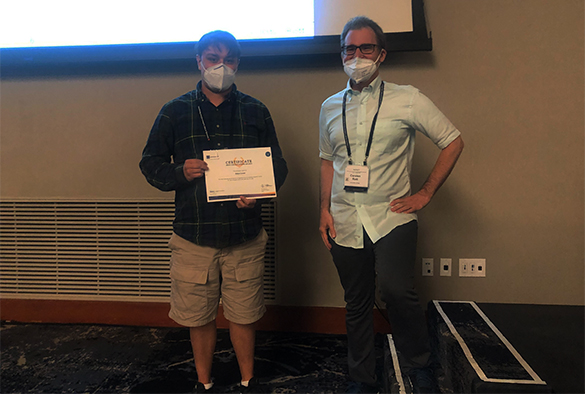LIV.DAT student Adam Lowe wins prize at NuFACT 2022

LIV.DAT student Adam Lowe attended the NuFACT 2022 conference in Salt Lake City, Utah from 31st July to 6th August this year. NuFACT 2022 is the 23rd in a series of yearly workshops which covers current and future accelerator and reactor based neutrino projects as well as muon projects and the Neutrino Factory Project.
The main goal of the workshop is to review the progress of current and future facilities which are able to improve on measurements of the properties of neutral and charged lepton flavour violations, as well as carrying out searches for new phenomena beyond the capabilities of presently planned experiments.
The NuFACT 2022 workshop is divided into seven working groups and Adam joined the working group on Detectors. As part of this working group Adam gave a talk about his research called ARIADNE+: Large scale demonstration of fast optical readout for dual-phase LArTPCs at the CERN Neutrino Platform.
In an ARIADNE detector, incoming particles ionise liquid Argon causing scintillation. The scintillations can then be detected using sensitive cameras creating a 3-D image of the incoming particle. This type of detector has been used before but the size needs to be increased substantially from a 1 tonne detector to a 1 kilotonne detector for use in future experiments. Some of the materials used in making these detectors have had to be changed for this new larger detector. The data collected in this research proved that the technology is scalable and that is suitable for use in future facilities such as DUNE.
Adam’s presentation was very well received and he won the prize for the best presentation in his working group. Adam said ‘“NuFACT was an amazing first conference for myself to attend, it was a great opportunity to meet others in person from my field, not just from the UK, but the US, Japan, Korea to name a few. I felt very proud to present data from the experiment which all of us within the ARIADNE+ group built from the ground up including exciting developments in direct VUV imaging which peaked the interest of many there.”
Congratulations!